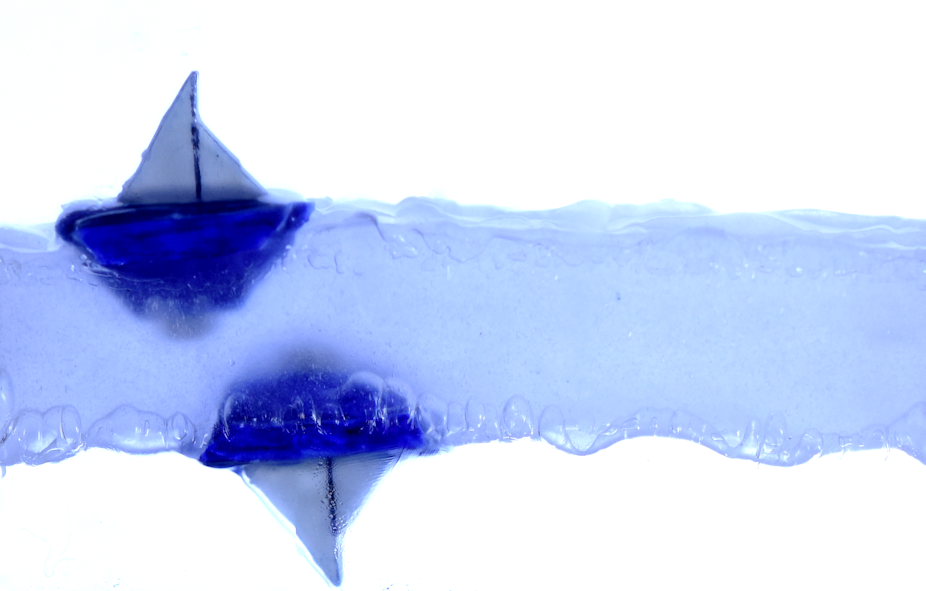Here on Earth, everything is subject to gravity – it makes objects fall to the ground and rivers flow from higher ground to the sea. We know what would happen without it, thanks to images of astronauts floating around their spaceship. But could we design an anti-gravity machine, something that would make objects fall upwards, oceans levitate, and boats float upside down?
Several imaginary worlds depict this concept, such as that of Pirates of the Caribbean 3, where Captain Jack Sparrow manages to make his ship float on the underside of an ocean where “up is down”. In the manga One Piece, adventurers explore a sea above the clouds. Could this happen in the real world?
Inverted pendulum
In the early 20th century, an astonishing experiment was carried out. It used a pendulum similar to that used by Professor Calculus in the Tintin comics, resembling a stiff rod with a weight at the end. When the pendulum is inverted vertically, with the weight at the top, you would expect it to fall back down at the least disturbance. But if we make the pendulum vibrate vertically, it will remain in the upside-down position. The pendulum stays inverted, defying gravity. Anyone can do this experiment at home, using a simple loudspeaker or jigsaw to vibrate the pendulum. A chain of pendulums linked to one another can also be stabilized upside down. With enough vibration, it would even be theoretically possible to make a rope stand up in the air like a magic trick – but with no trickery involved! However, in practice it is hard to attain a speed of vibration that is fast enough for this version of the experiment.
Nobel Prize in Physics laureate Pyotr Kapitza found the explanation for this phenomenon in the 1950s. It is a dynamic effect – the vibrations act as a stabilizing force on the weight of the pendulum to keep it balanced. This force can be found mathematically from correlations between the vibration of the suspension point connecting the motor and the pendulum and the position of the pendulum.
Upside down liquids?
Everyday experience shows us that liquid does not stay inverted either: when steam condenses on a saucepan lid or when you paint a ceiling, droplets will form and eventually fall.
But when the ceiling is made to vibrate vertically, we observe that these hanging droplets are reabsorbed into the layer of liquid, which flattens out as if gravity was inverted. It’s the same phenomenon at work as for the pendulum. Vibrating the hanging droplets creates force going upwards, opposing their mass. With enough vibration, the whole liquid layer remains stable.
What happens to an object placed in a levitating liquid?
When an object is immersed in a liquid, its behaviour depends on its density. An object that is less dense than the liquid will float to the surface, while a denser one will sink. That is why, for example, an air bubble at the bottom of a bucket of water will float to the surface (as air is less dense than water at atmospheric pressure). However, early on in the Space Race, a strange phenomenon was observed. Gas bubbles in rocket fuel would sink rather than float to the surface under the effect of vibrations during flight, which could have serious consequences. Extensive studies done on this bizarre phenomenon revealed that the oscillations of the bubbles caused by the rocket’s vibration resulted in force going downwards, opposing Archimedes’ principle.
This experiment can be easily reproduced with a container full of a liquid that is made to vibrate. You can use a syringe to create bubbles in the liquid and control their movement by changing the vibration frequency of the bath.
If you inject more air, it is even possible to fill the entire bottom of the container, thus making the liquid levitate on a cushion of air. It may seem paradoxical but, just as it does with the pendulum or the liquid layers, the vibration stabilises the liquid and prevents it from shifting. As it cannot let the air escape, it remains in suspension. The bigger the layer of liquid, the more energetic vibration is required. Our vibrator allowed us to lift half a litre of liquid. Still a long way off from an ocean, but enough to create a miniature world to play with!
Topsy-turvy world
Now that the décor is in place, it’s time to imagine what life would be like in such a world. Could we swim or float underneath this ocean? The answer is far from obvious – but it would seem that we could, just as we could float on top! When floating, there is absolutely no difference between being on top or underneath the liquid. The source of this “anti-gravity” is the same – vibration. On a surface that shouldn’t exist, it stabilises floaters that have no business being there. The original effects of vibration on liquids are still largely unexplored and have many potential applications. Vibration can provide energy to liquids in a differentiated, localised way, without the need for direct contact. In the future, this could be used to shift equilibrium for desalination, for example, or to separate mixtures of liquids, as well as elements mixed into the liquids, for wastewater treatment and oil spill cleanup, for instance.
It is, first and foremost, an invitation to your imagination. Such experiments make you dream of boats crossing paths without catching sight of one another, or a sky full of sailboats. It’s enough to make Archimedes jump out of his bath – or to overturn the bathtub altogether.
Translated from the French by Rosie Marsland for Fast ForWord


